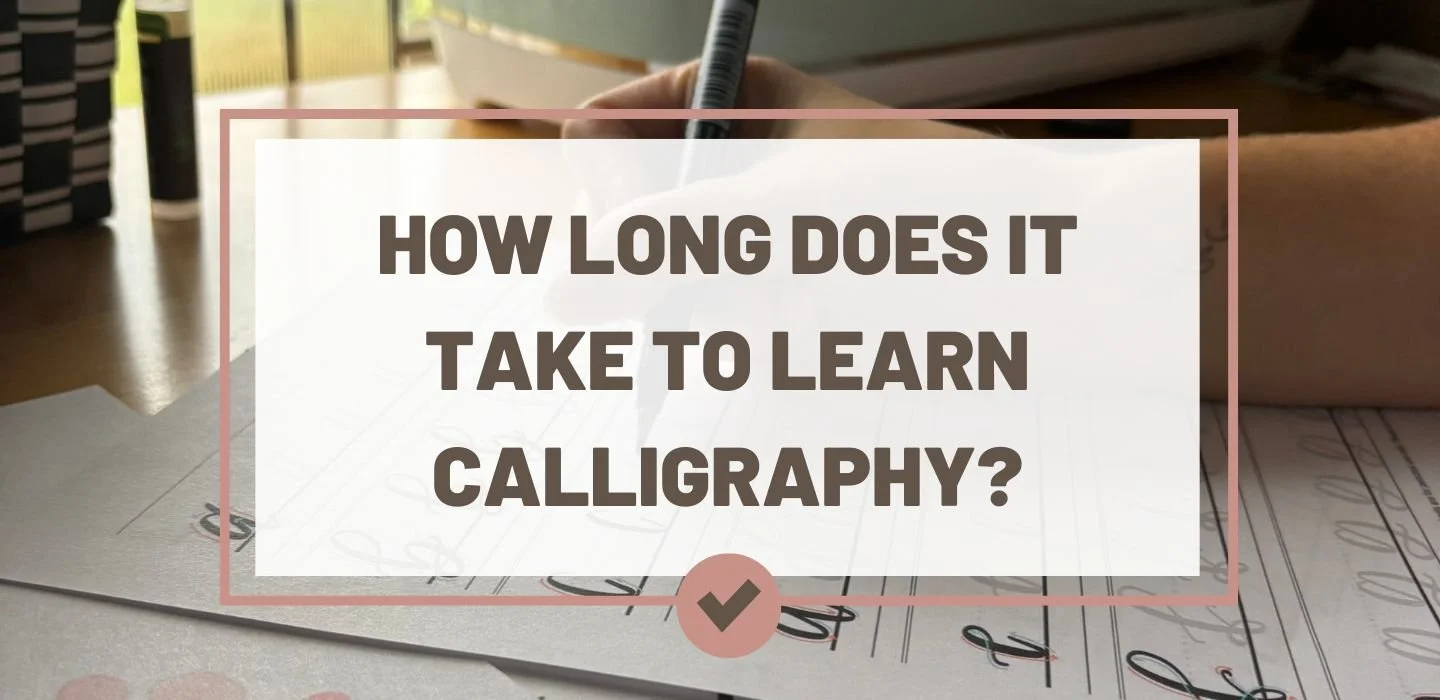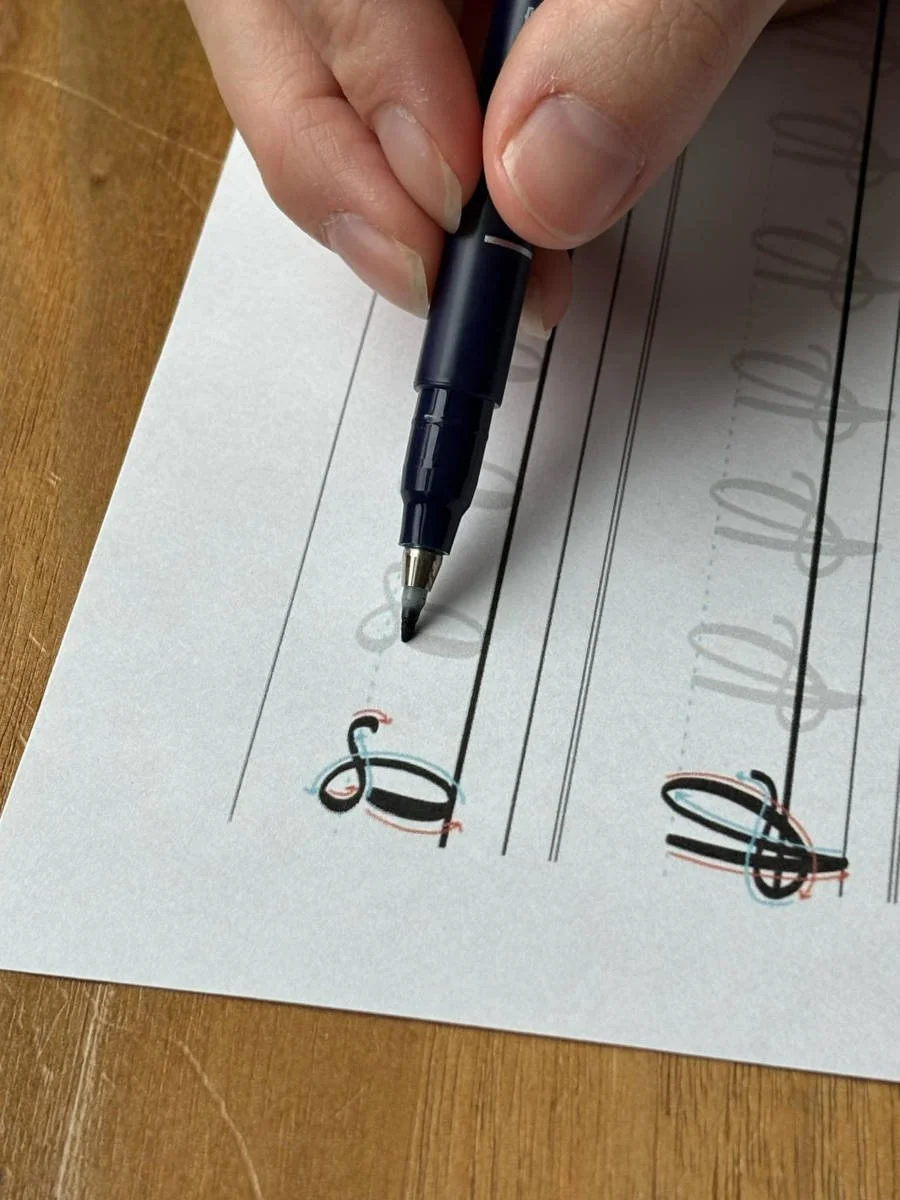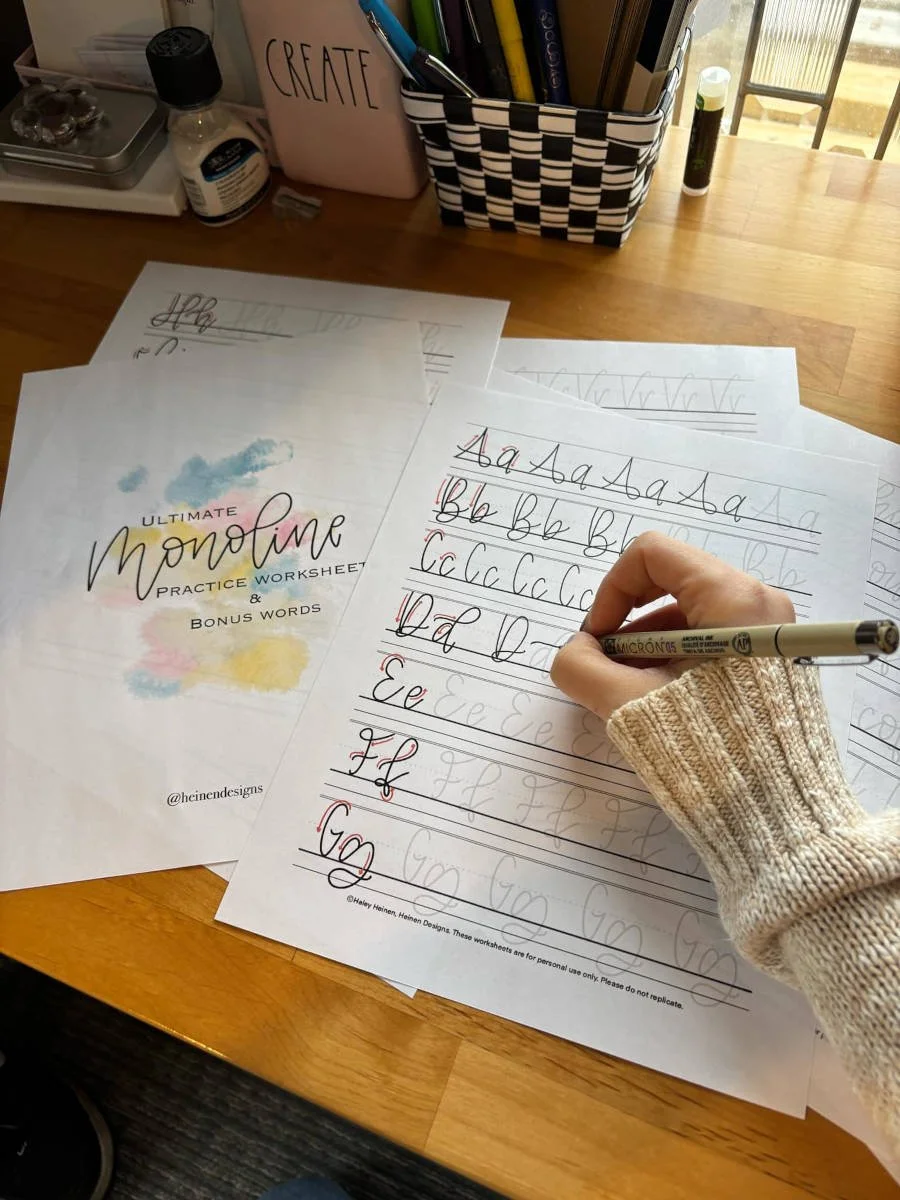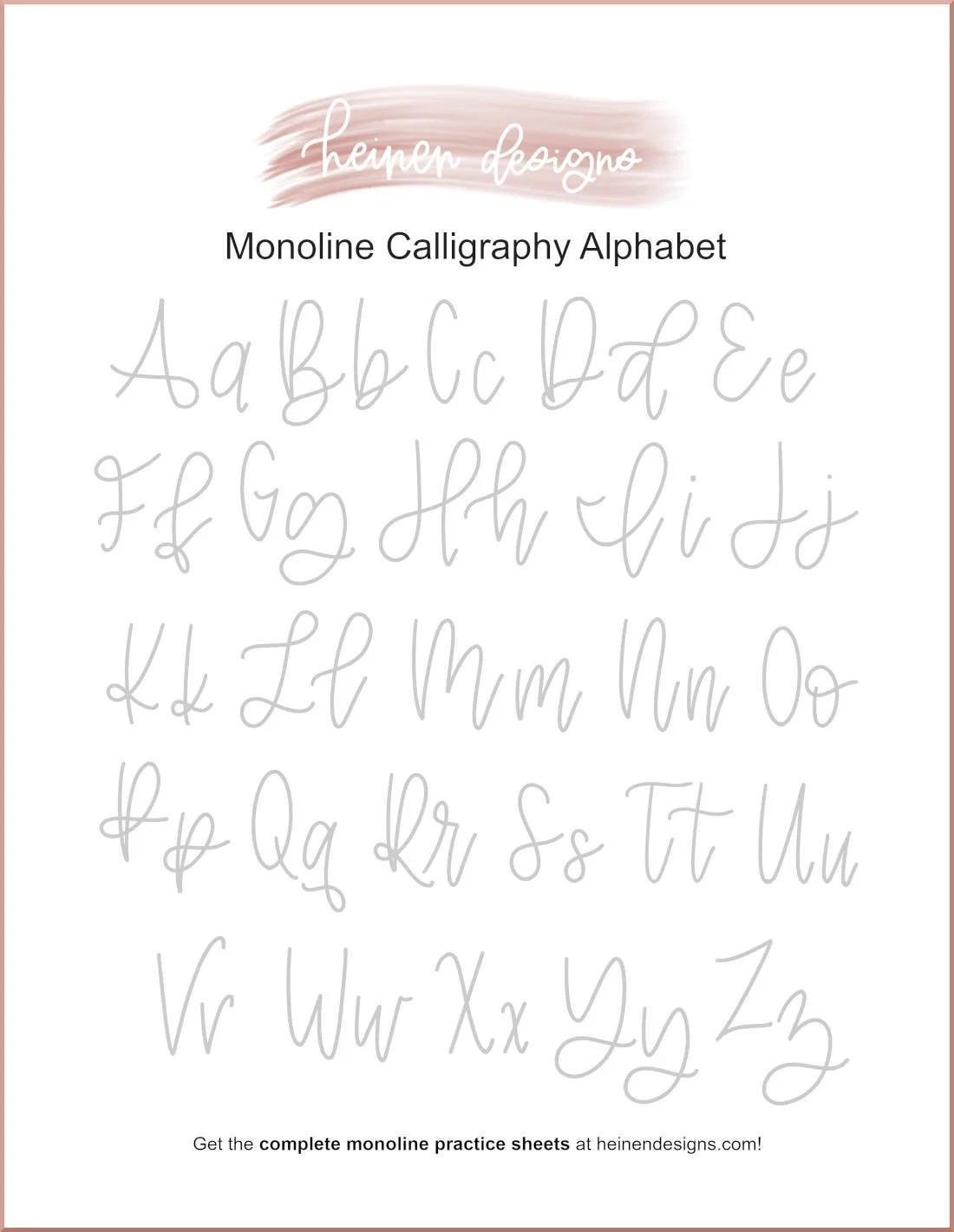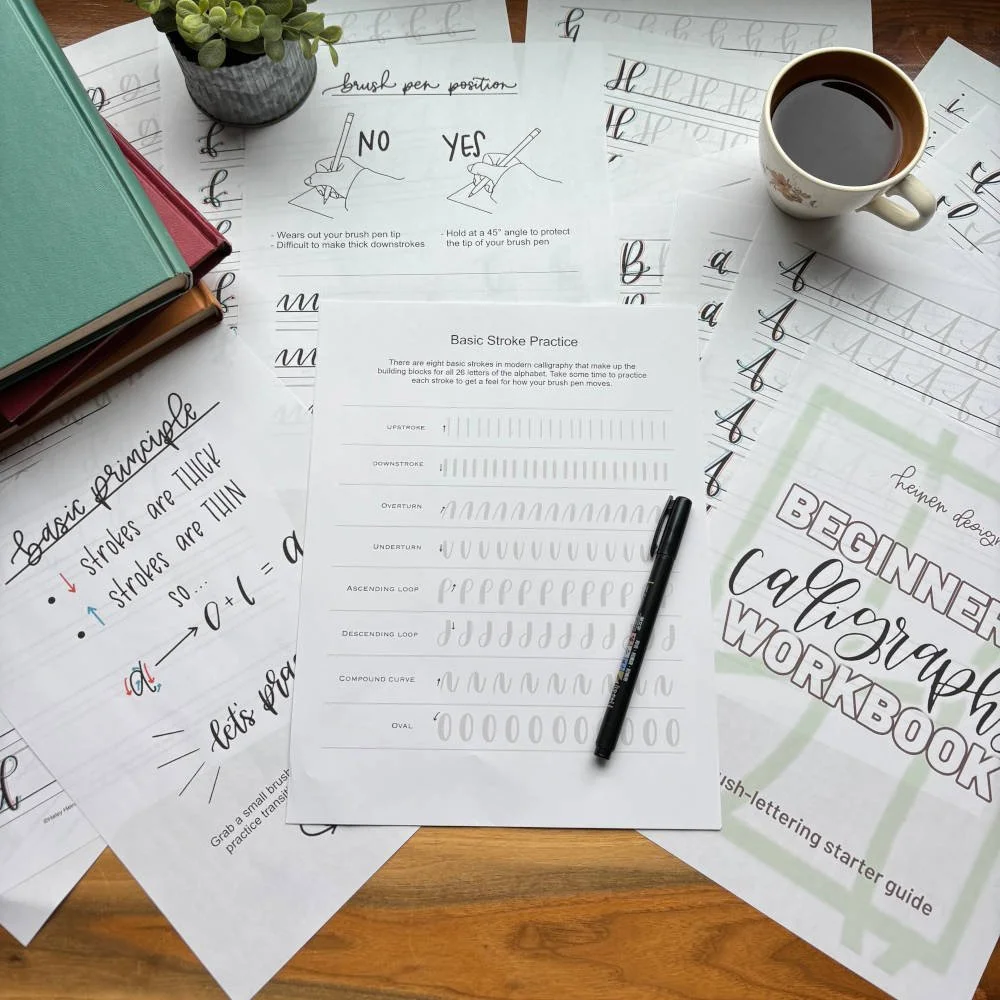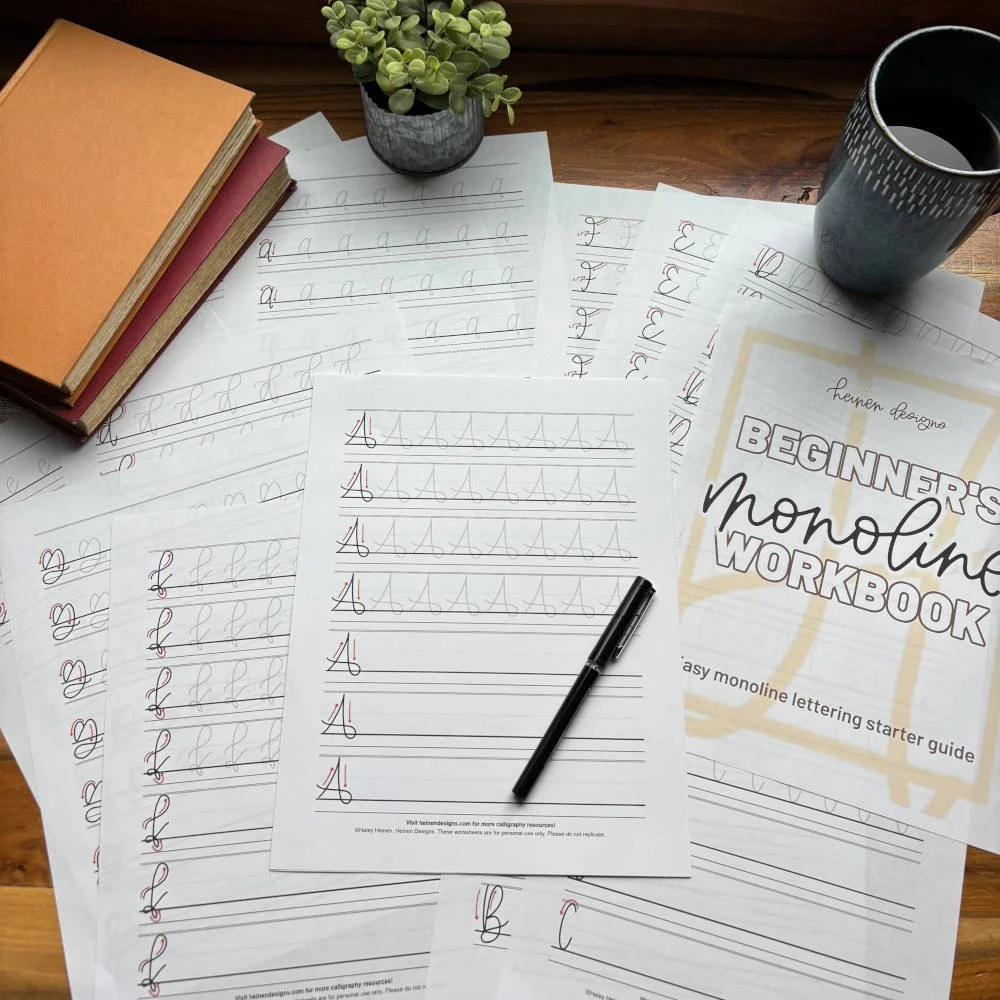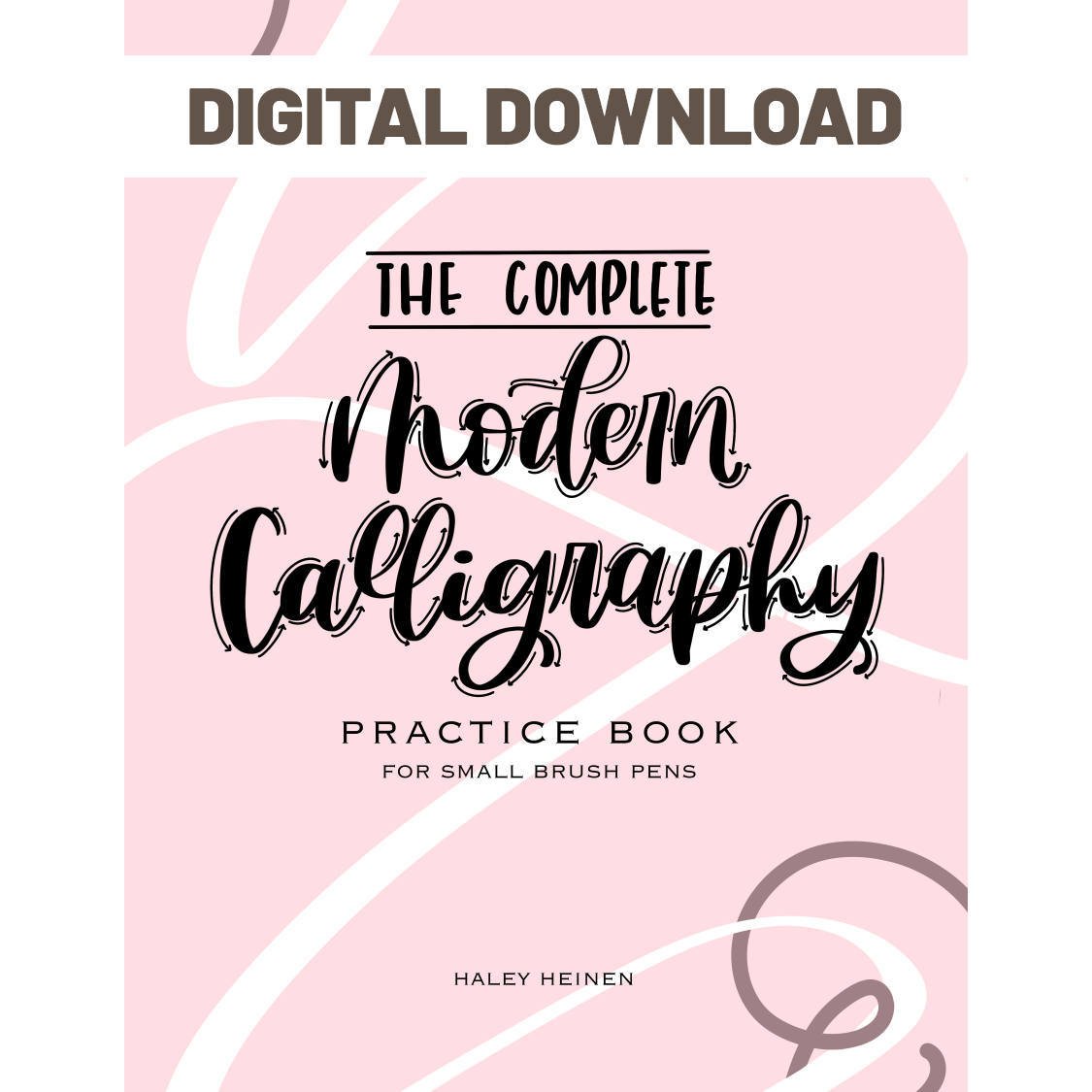How Long Does It Take to Learn Calligraphy?
If you’ve ever watched a mesmerizing calligraphy video and thought, “That looks amazing, but how long would it take me to actually do that?” — you’re not alone.
The truth is, learning hand-lettered calligraphy doesn’t have to take years. With the right tools, consistent practice, and a little bit of guidance, you can start creating beautiful letterforms in just a few weeks. And with regular practice, you can be confidently hand-lettering full quotes, cards, and designs within a few months.
In this guide, we’ll walk through what to expect when you’re learning calligraphy, how long each stage typically takes, and the best ways to speed up your progress — especially with the help of focused practice sheets.
Tap to jump to a topic:
Don’t forget to grab your FREE downloadable worksheet before you go!
What Do We Mean by “Learning Calligraphy”?
Before we talk timelines, let’s clarify what we mean by “learning calligraphy.”
There are many different types of calligraphy and lettering, from traditional pointed pen scripts to modern brush lettering to tall and thin monoline fonts. This guide focuses on modern hand-lettered calligraphy, specifically the styles created with monoline tools (like fine liners or pencil) or brush pens.
Learning hand-lettered calligraphy doesn’t mean you need to become a professional lettering artist. For most beginners, the goal is to:
Learn the basic letterforms
Develop confidence and control
Create simple pieces like cards, quotes, or journal headings
If that’s you, you’re in the right place.
The Typical Learning Timeline
Everyone learns at their own pace, but here’s a realistic breakdown of how long it usually takes to learn hand-lettered calligraphy, especially with structured practice and the right materials.
Weeks 1–4: Getting Comfortable
In the first month, you’ll focus on the basics:
Understanding how to hold your pen or marker
Practicing the fundamental strokes (upstrokes, downstrokes, ovals, compound curves, etc.)
Using practice sheets to repeat letter shapes and develop muscle memory
At this stage, you’ll likely spend your time practicing individual letters—especially lowercase. It may feel repetitive, but this is where the real groundwork happens.
Time commitment: Aim for 15–30 minutes a day, 4–5 days a week.
Tools to use:
Monoline practice sheets (great for beginners)
Pencil or fine liner (easier to control than a brush pen at first)
Month 2–3: Building Fluency
Once you’re more confident with the alphabet, you’ll start connecting letters into words and phrases. You’ll learn to:
Control spacing and alignment
Practice bounce lettering or simple flourishes
Begin working with short quotes or headers
This is the stage where things start to feel exciting. You’re lettering actual words that you can use on cards, envelopes, or journal pages!
Time commitment: Still 15–30 minutes a day, but now you can add in occasional longer sessions for fun projects.
Helpful resources:
Word practice sheets (e.g., “hello,” “love,” “thank you”)
Layout guides for centering and spacing
3–6 Months: Developing Style
After a few months of consistent practice, you’ll likely find your rhythm and your personal style. You might:
Experiment with flourishes and variations
Try combining styles (like brush lettering + tall and thin)
Create layouts for Instagram posts, posters, or small gifts
By this point, you’re not just copying — you’re creating. You may still use practice sheets for warmups or inspiration, but you’ll also be developing original work.
Time commitment: Your routine might be more flexible — some days for sketching, some for refining pieces.
What helps most:
Style-building guides
Creative prompts and project ideas
Critiquing your own work or joining lettering communities
What Affects How Fast You Learn?
Your calligraphy journey is uniquely yours, but several factors can impact your progress. While some people seem to pick up calligraphy quickly, others feel like they're struggling to improve. The truth is, how fast you learn has much less to do with "natural talent" and much more to do with how you practice and what tools you use. Here are the biggest factors that influence your learning speed.
1. Consistency Over Time
If there’s one thing that makes the biggest difference, it’s showing up regularly. Practicing a little bit every day is far more effective than doing a long session once a week.
Why? Because calligraphy relies heavily on muscle memory. Your hand needs time and repetition to learn those curves, slants, and connections. Even 10–15 minutes a day can lead to visible progress in just a few weeks.
Tip: Try to build a simple habit, like practicing after your morning coffee or while watching a show in the evening.
2. The Tools You Use
Using the wrong tools can slow your progress or make practice frustrating. If you're just starting, a flexible brush pen might feel hard to control, and that can make your letters look shaky, even if you're doing everything "right."
Starting with monoline tools (like a pencil or fineliner) simplifies the learning process because you’re only focusing on shape and spacing, not pressure or stroke contrast.
Tip: Start simple. Once you’ve mastered the basic shapes and forms, you can move into brush pens and more advanced styles with confidence.
3. The Style You’re Learning
Some lettering styles are more beginner-friendly than others. For example:
Monoline calligraphy is often the easiest to start with because all strokes are the same thickness.
Faux calligraphy teaches the look of script lettering without requiring a brush pen.
Brush calligraphy adds complexity with pressure variation and stroke control.
If you jump into a complex or flourished style too early, it can feel overwhelming. By starting with an approachable style, you’ll learn the building blocks you need for everything else.
Tip: Master one foundational style before branching out. It sets you up for long-term success.
4. Your Goals & Motivation
Are you learning for fun, to improve your journaling, to make signs for an event, or to eventually sell your work? Your timeline might vary depending on what you’re aiming for.
If your goal is simply to decorate your planner or write pretty envelopes, you might feel confident within a month or two.
If you’re aiming for custom lettering commissions or murals, you’ll need more time to refine your style, understand layout, and build a portfolio.
Tip: Be clear on why you’re learning calligraphy. Your goals will shape your practice and help you stay motivated when progress feels slow.
5. Your Learning Mindset
The right mindset is just as important as the right pen.
Calligraphy is not about perfection; it's about progress. You will make wobbly lines. You will write awkward-looking letters. That’s part of the process. If you expect to be perfect right away, you’ll burn out fast.
But if you allow yourself to enjoy learning, celebrate small wins, and look back to see how far you’ve come, you’ll stay in the game and keep improving.
Tip: Keep a “first page” from your early practice sessions. In a few weeks, compare it to your current work. That visual proof of growth is incredibly motivating.
How to Learn Calligraphy Faster
Calligraphy takes time—but that doesn’t mean you can’t speed up the learning process with the right strategy. If you want to progress faster (without skipping the foundational skills), here are some of the most effective ways to get better, quicker.
These tips are perfect for beginners who want to build confidence and start creating beautiful letters in less time.
Use guided practice sheets to stay focused and intentional.
Start with monoline tools so you can master letter shapes first.
Track your growth to stay motivated and see your wins.
Practice by copying for learning not posting.
Keep it fun so your practice becomes something you look forward to.
Use Practice Sheets with Purpose
One of the most common mistakes beginners make is practicing randomly—writing whatever comes to mind without structure. This kind of “freestyle” practice feels creative, but it often leads to frustration and slow improvement.
Practice sheets take the guesswork out of practice. They guide your hand through the exact strokes, letterforms, and connections you need to build muscle memory and visual consistency.
Instead of rewriting the alphabet a hundred times with no clear goal, practice sheets give you focused repetition where it counts most.
Try this: Start with a beginner-friendly lowercase alphabet sheet. Trace the letters slowly, then try writing them on your own. Repeat the process a few times a week and watch your strokes smooth out over time.
Start with Monoline Calligraphy
If you're brand new to lettering, pressure-sensitive tools like brush pens can feel intimidating. A small change in hand pressure can totally change the look of a stroke—and that can be frustrating when you're still figuring out basic letter shapes.
That’s why monoline calligraphy is such a great place to begin. With monoline, every stroke has the same weight. You don’t have to think about pressure—just shape, size, and spacing.
This lets you focus on the foundation of good lettering: letterforms, rhythm, and control.
A pencil, gel pen, or fineliner marker is perfect for monoline practice. You can even practice on grid paper or dot pads to help with consistency.
Track Your Progress Visually
You might not feel like you’re improving—but if you keep a record of your work, you’ll be surprised how far you’ve come.
Take a photo of your lettering once a week. Label it with the date and what you practiced. After a month or two, compare the photos—and you’ll probably see big changes in smoothness, balance, and spacing.
Here’s why this helps. Progress often happens gradually. Looking back at older work shows you that you are improving, even when it doesn’t feel like it in the moment. That boost of motivation will keep you coming back to practice.
Copy for Practice, Not for Posting
When you’re learning, it’s 100% okay to copy someone else’s lettering—as long as it’s for practice only. In fact, copying can be one of the most powerful tools for learning letter structure and spacing.
It helps you train your eye and hand at the same time. Just make sure you don’t share copied work as your own original creation.
Keep It Manageable & Make It Fun
Burnout is real—even in a hobby as beautiful as calligraphy. If you try to go from zero to professional in a month, you’ll get frustrated and give up.
Instead, create a practice routine that’s easy to stick to:
Short sessions (10–20 minutes)
Fun words or phrases you care about
Occasional “just for fun” projects (like cards or journal spreads)
The more you enjoy the process, the faster you’ll improve—because you’ll actually want to come back to it. Need inspiration? Try a themed lettering challenge (like “30 Days of Quotes”).
Resources to Help You Learn Faster
At Heinen Designs, we offer tools specifically designed to make your calligraphy journey smoother. Some of these resources include:
Monoline practice sheets – perfect for beginners looking to master the basics
Brush lettering guides – for when you're ready to add style and flair
Free downloadable worksheets – to let you try out different font styles and letters before you choose a specific path
Explore the full practice sheet collection or try our beginner’s calligraphy workbook to get started.
It’s a Journey, Not a Race
Learning hand-lettered calligraphy doesn’t happen overnight, but it also doesn’t have to take years. With the right tools, consistent effort, and a little bit of joy in the process, you’ll be amazed at what your hands can create in just a few months.
Stick with it, enjoy the progress, and celebrate every messy sketch and finished piece along the way.
Ready to start? Grab a free worksheet and your first practice sheet to dive in!


